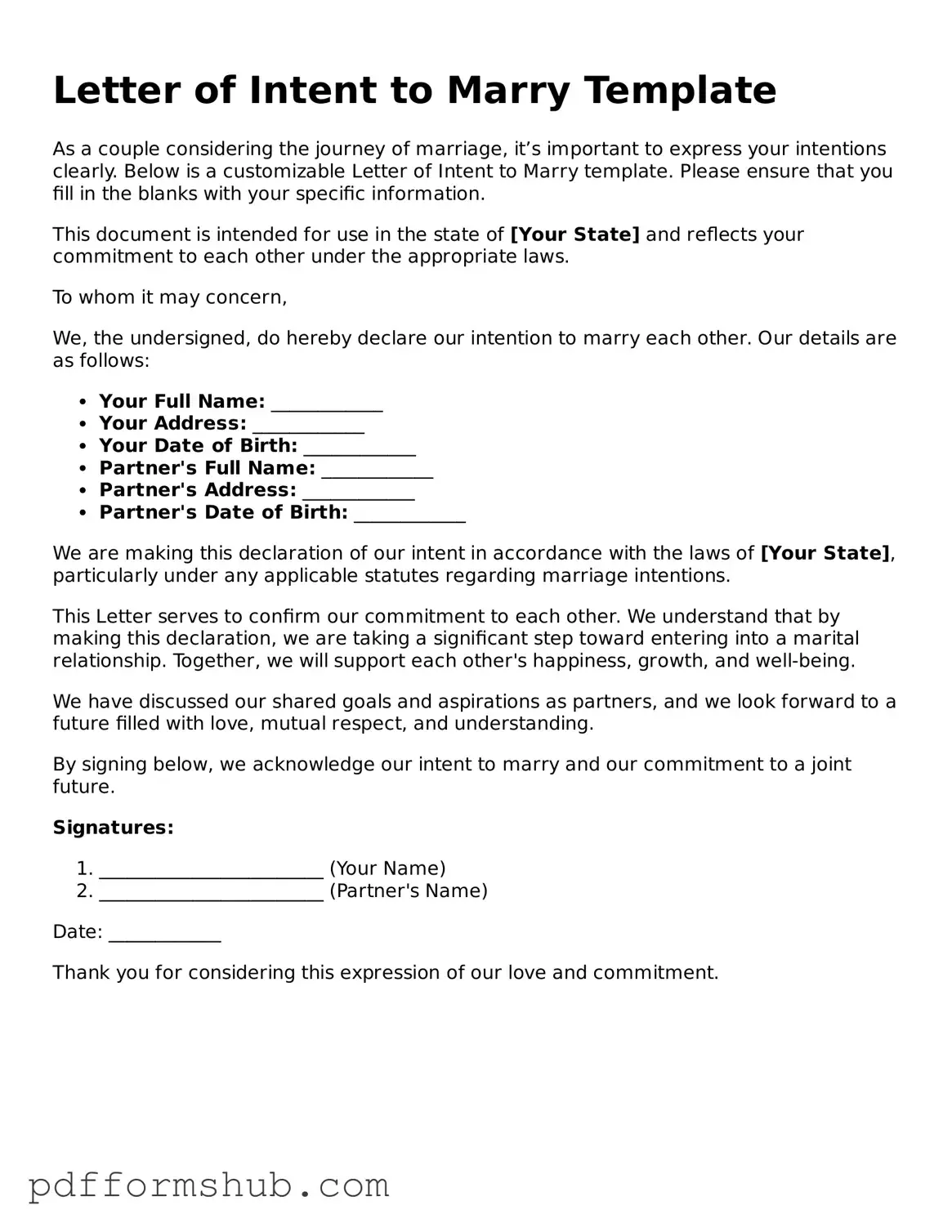In the journey toward marriage, a Letter of Intent to Marry serves as a significant step for many couples. This document, while not legally binding, expresses the mutual desire of both parties to enter into a marital relationship. It often outlines important details such as the couple’s intentions, any specific conditions they wish to address, and the timeline for their upcoming nuptials. The form can also serve as a tool for fostering open communication about expectations and responsibilities within the relationship. By putting intentions in writing, couples can clarify their goals and aspirations, which can ultimately strengthen their bond. Furthermore, this letter may be beneficial in discussions with family members or when planning future commitments. Understanding the implications and uses of a Letter of Intent to Marry can help couples navigate their path to a successful marriage with confidence and clarity.
